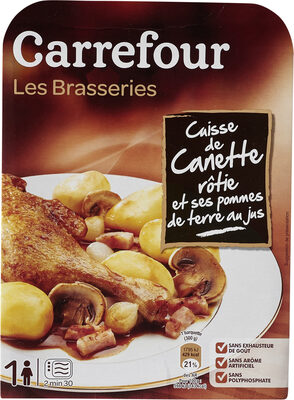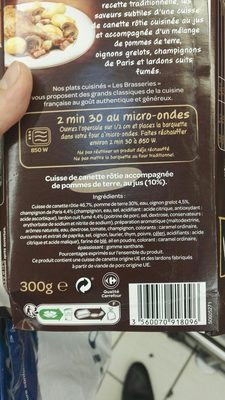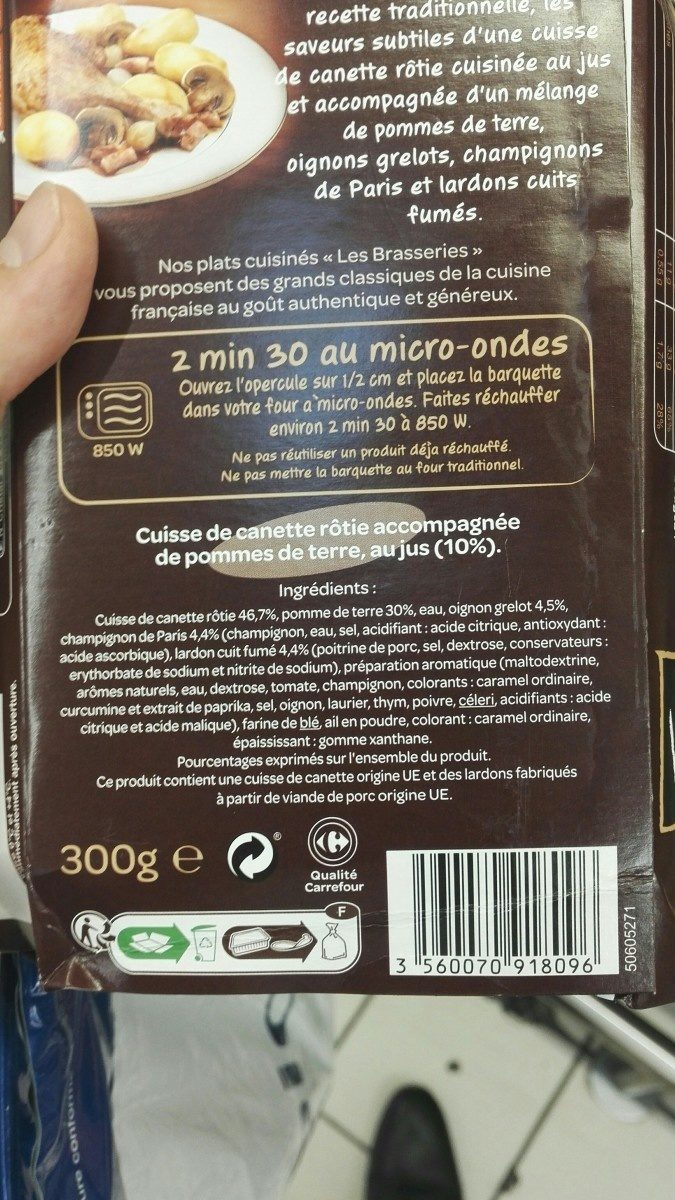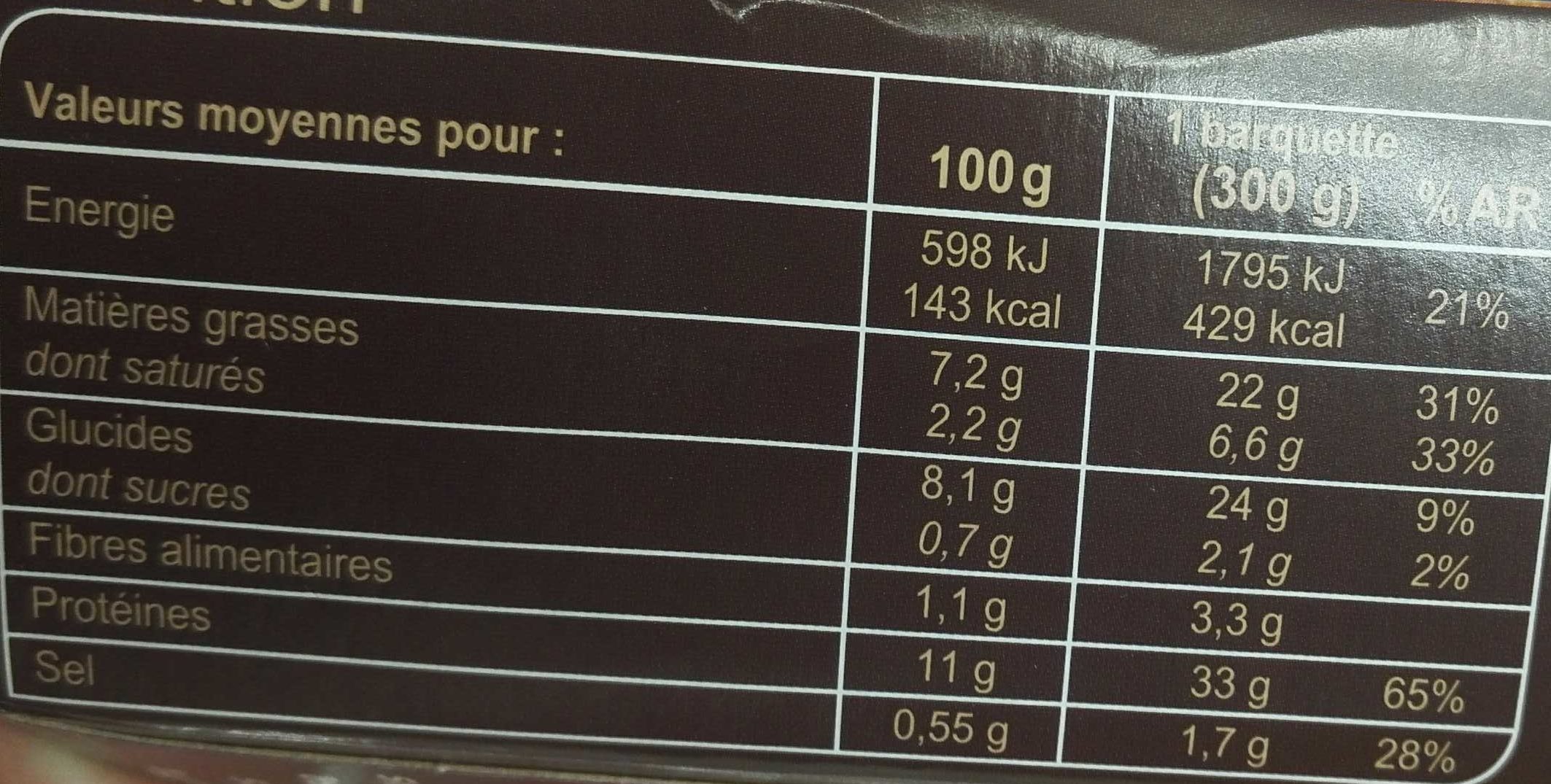Cuisse de canette rôtie et ses pommes de terre au jus - Carrefour - 300 g
Important note: this product is no longer sold. The data is kept for reference only. This product does not appear in regular searches and is not taken into account for statistics.
This product page is not complete. You can help to complete it by editing it and adding more data from the photos we have, or by taking more photos using the app for Android or iPhone/iPad. Thank you!
×
Some of the data for this product has been provided directly by the manufacturer Carrefour.
Barcode: 3560070918096 (EAN / EAN-13)
Common name: Cuisse de canette rôtie accompagnée de pommes de terre, au jus (10%)
Quantity: 300 g
Packaging: Tray
Brands: Carrefour
Categories: Meats and their products, Meals, Meals with meat, Potato dishes, Poultry meals, Duck dishes
Labels, certifications, awards:
No artificial flavors, de:Ohne Polyphosphate, Cooked in France, Green Dot, Made in France, No flavour enhancer
Origin of the product and/or its ingredients: Ce plat est cuisiné en France à partir de viande de canette et de viande de porc origine UE et de pommes de terre cultivées en UE.
Producer: Fabriqué en France par EMB 84007 W pour Interdis.
Traceability code: FR 84.007.020 CE - Avignon (Vaucluse, France), EMB 84007W - Avignon (Vaucluse, France)
Stores: Carrefour
Countries where sold: France
Matching with your preferences
Environment
Carbon footprint
Packaging
Transportation
Other information
Other information: Retrouvez à travers cette recette traditionnelle les saveurs subtiles d'une cuisse de canette rôtie cuisinée au jus et accompagnée d'un mélange de pommes de terre, oignons grelots, champignons de Paris et lardons cuits fumés. Sans arôme artificiel Cuisiné en France Picto 1 personne Picto temps de cuisson microondes 2 min 30.
Preparation: Au four à micro-ondes : Ouvrez l'opercule de la barquette sur 1/2 cm et placez-la dans votre four à micro-ondes. Faites réchauffer environ 2 min 30 à 850 W. Ne pas réutiliser un produit déjà réchauffé. Ne pas mettre la barquette au four traditionnel.
Conservation conditions: A consommer jusqu'au / N° de lot : voir sur le côté. A conserver entre 0°C et +4°C. A consommer immédiatement après ouverture. Conditionné sous atmosphère protectrice.
Customer service: Interdis - TSA 91431 - 91343 MASSY Cedex - France
Report a problem
Data sources
Product added on by electro27
Last edit of product page on by org-carrefour.
Product page also edited by bojackhorseman, carrefour, keragui, kiliweb, moon-rabbit, openfoodfacts-contributors, packbot, roboto-app, segundo, spotter, yuka.WDRJOUQ2QmYrS0FCbHNSdXB5dlQ5ZjlGNXAyUFpFRzFkZEE4SUE9PQ.










